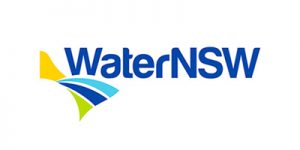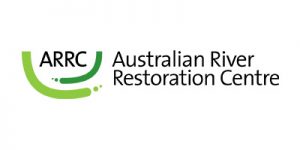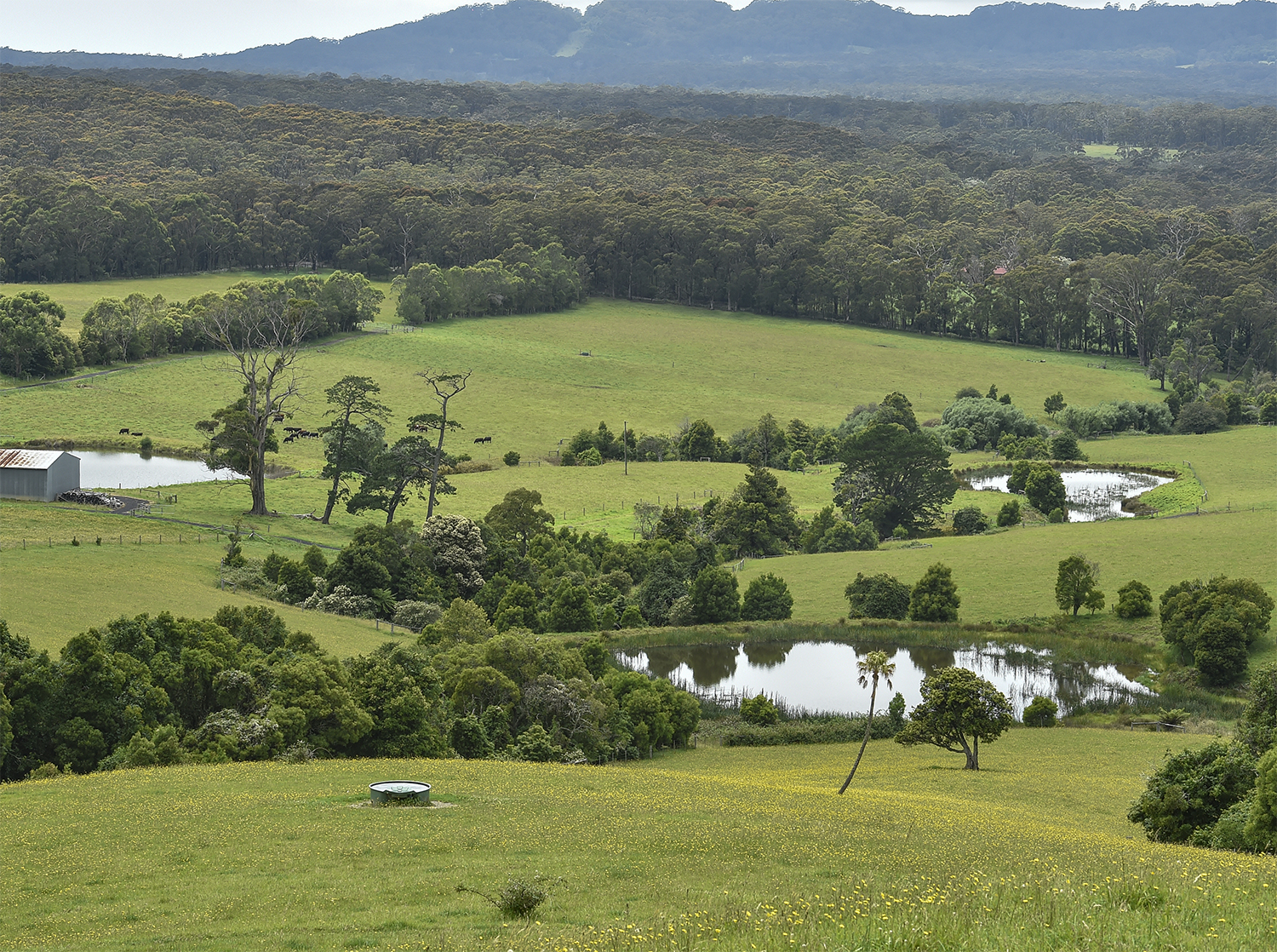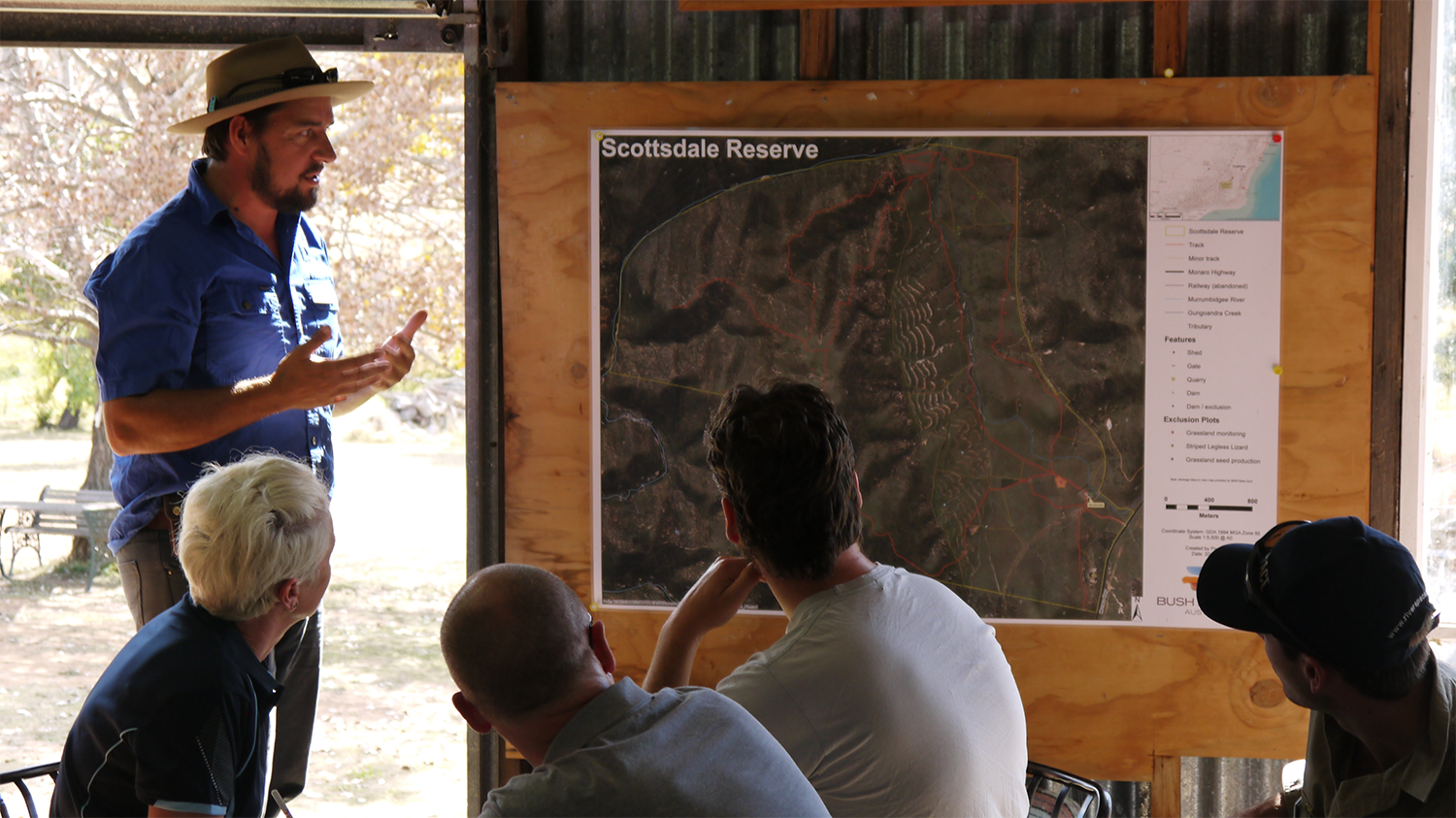Healthy riparian areas perform so many valuable functions that it makes good sense to protect them. Taking a ‘whole farm approach’ is recommended when designing and planning the work you want to carry out. It involves:
- assessing the impacts your riparian areas in their current state have on your farm business.
- evaluating the benefits that improved riparian management will have on your farm business.
- designing new infrastructure so that it makes your farm management easier and more productive.
- prioritising works according to need, cost and effort.
- scheduling works to fit in with your farm management and budget.
Spending the time now to plan for good stock management will save you time, cost and effort in the long run.
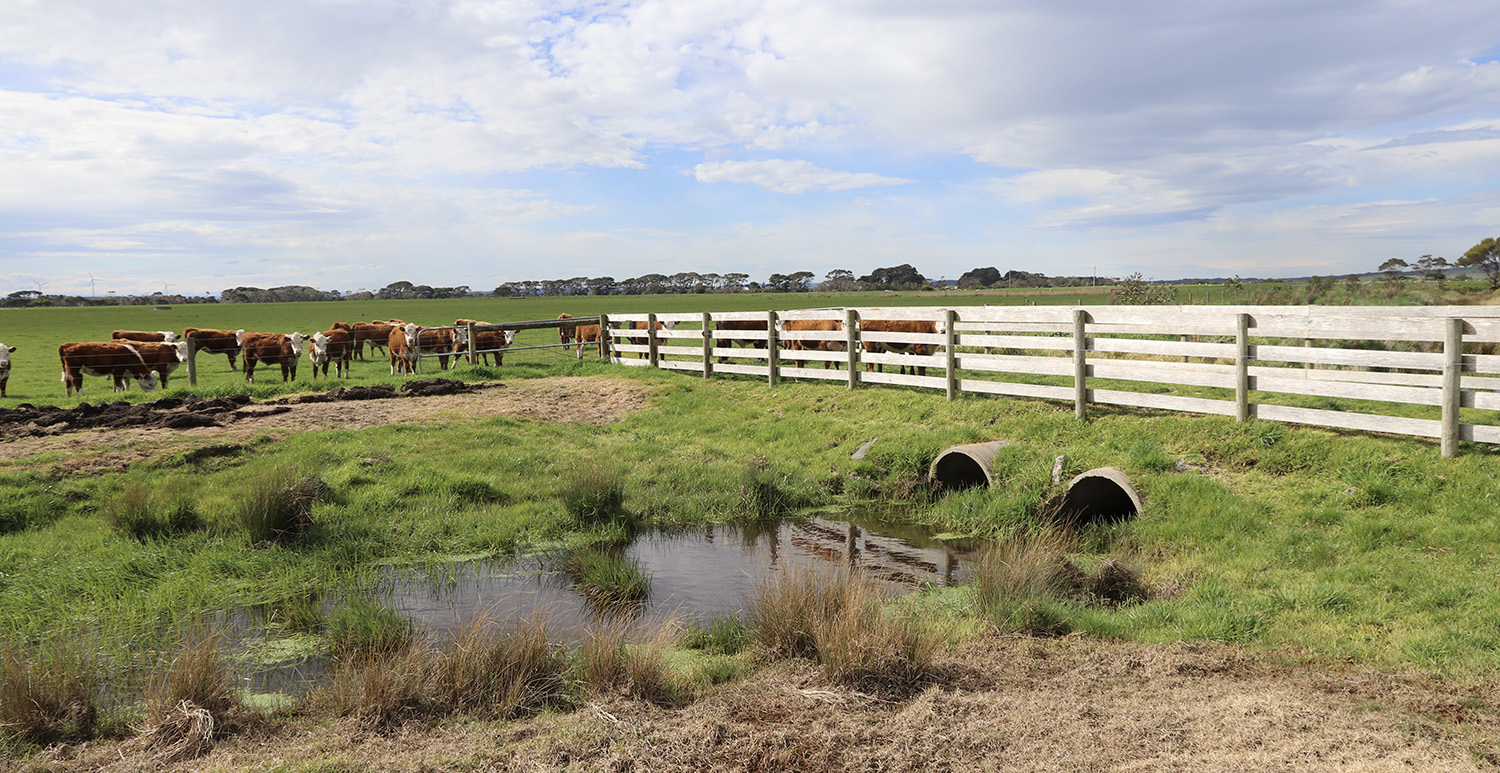
A whole farm plan
Most of the farmers in this Guide prepared some type of plan to help them decide the best way to manage their riparian land. A rough sketch of your waterway and surrounding areas will suffice, but an even better idea is to prepare a whole farm plan showing the natural and man-made features of your property.
A whole farm plan will help you identify the different parts of your property, the connections between them, and their actual and potential contribution to your business. It will also help you identify those areas, such as your riparian land, that require special treatment to get the most rewards.
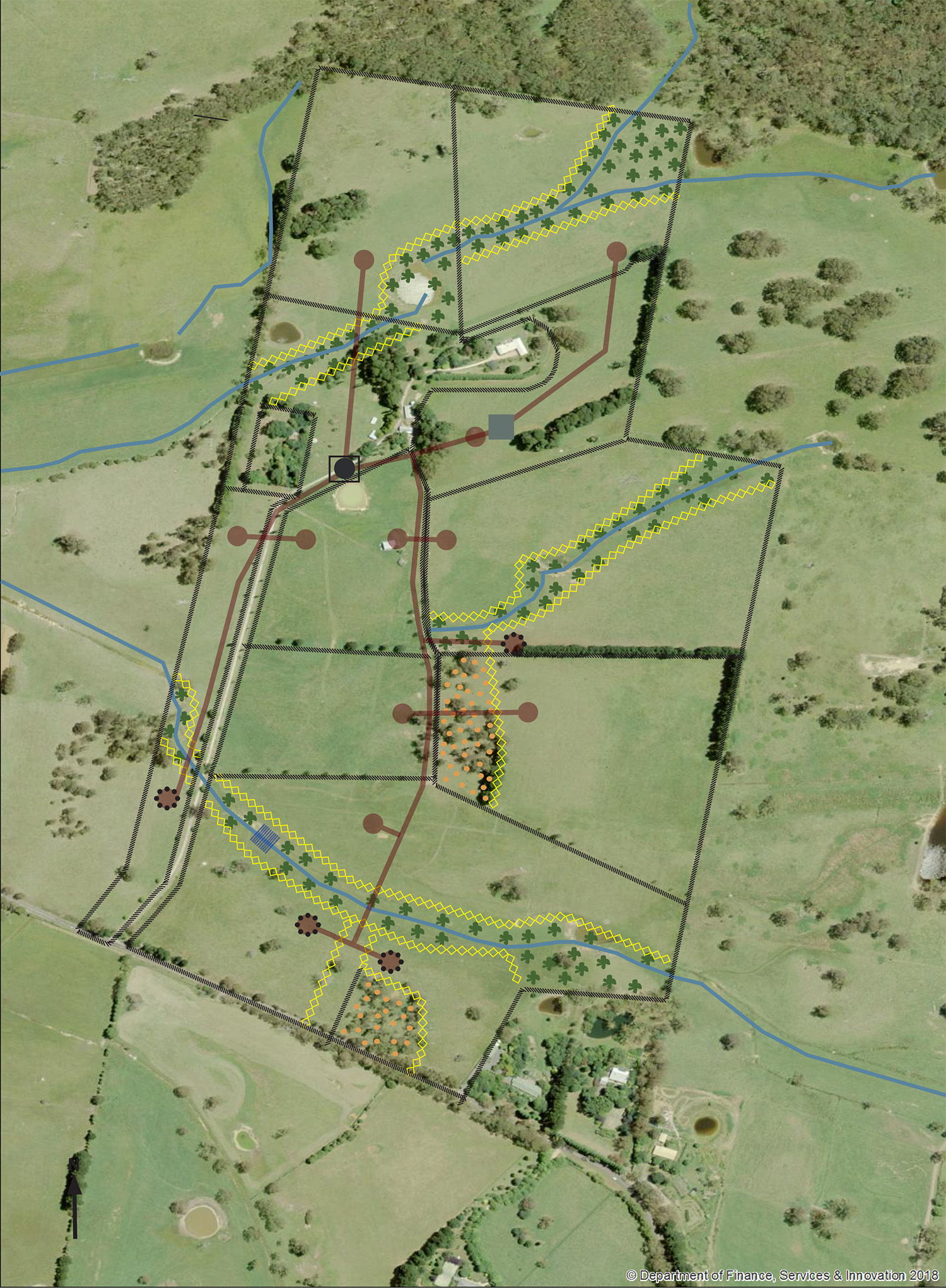
Many public and private agencies offer whole farm programs and training online or in person, or you can work through the steps yourself. Whichever option you choose, a recent satellite image showing the boundaries and natural and man-made features of your entire property is an excellent place to start. High quality satellite images are readily available online.
Legend
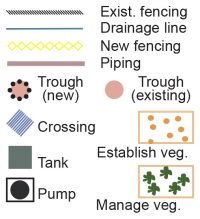
Planning your best paddock layout
In the past, paddock layout was limited by the availability of water. This often resulted in large, square paddocks containing a variety of land and soil types, and differing levels of fertility.
Today, our ability to move water across the farm landscape means that farmers can subdivide their land according to its capabilities and limitations.
The most productive farms will usually comprise a number of smaller, irregularly shaped paddocks with sensitive areas like riparian land, remnant vegetation or degraded areas, fenced off to enable protection or restoration.
Carefully sited laneways, gates, crossings and other easements will help you control stock and manage grazing pressure, and improve the way both stock and vehicles access the different parts of your property.
All of the farmers in this Guide have benefitted from some type of support, in the form of advice, funding or practical help.
Your local Landcare, New South Wales Local Land Services or Rivers of Carbon websites are great places to start investigating what support might be available in your area.
PUTTING IT INTO PRACTICE: TABITHA AND BRAD’S STORY
Deciding to protect the riparian areas on their new property has paid dividends for Kangaroo Valley beef farmers, Tabitha and Brad Hawthorne.
Knowing they needed to install a watering system allowed them to completely reconfigure the paddock layout to be able to apply best management practices across the entire farm. A bonus was discovering that help was available for both funding and design advice.
“The bones of the farm are all there now.”
When Tabitha and Brad purchased their 110 acre property, few internal fences – other than those which ran unhelpfully through the middle of the gullies – were intact. The cattle had free roam and would duck into the gullies whenever Tabitha and Brad tried to move them.
Erosion was a problem, especially along the top of the in-stream dam which doubled as a crossing, making driving across the property in winter a challenge. And, after years of set-stocking, the pasture was weedy and uneven.
Instead of simply repairing the fences, Brad and Tabitha stepped back and, with the help of courses like LANDSCAN® and Prograze®, looked at the farm as a working landscape. Protecting the riparian areas along Target Creek and their dam became a priority, followed by better grazing through the creation of smaller, similarly-sized paddocks.
They also wanted easier stock and vehicle movement, both across the farm and to and from the yet-to-be-built stockyards.
As soon as Brad and Tabitha decided to fence off both sides of the creek, the design fir rest of the subdivision came together quite naturally and logically.“The riparian fencing formed the backbone of the plan and showed us where the other paddocks should go,” explains Brad.
Before they could fence off the creek and dam, however, they needed to install a watering system. Their Local Land Services directed them to WaterNSW which helped landholders protect their riparian areas with grants, advice and other support.
“What WaterNSW thought was best practice was exactly what we were planning to do,” says Brad. “They gave us a model to work from and the funding meant we could get the ball rolling much quicker than if we’d had to pay for it all ourselves.”
A new dam with an all-weather crossing was built, the old dam was cleaned out, and troughs installed in each new paddock. One part of the farm is gravity fed; the other receives water pumped via a petrol pump to a header tank. A float on the header tank (pictured below) that can be seen from the kitchen sink was “expensive but paid for itself in the first week!”.
New (self-funded) stockyards, which tie in nicely with the crossing, complete the picture.
“Protecting our riparian areas is the best infrastructure project we’ve done,” says Brad. “We have a watering system that lets us graze the way we want to, our dams are protected from erosion and we can get from one side of the farm to the other in all kinds of weather.”
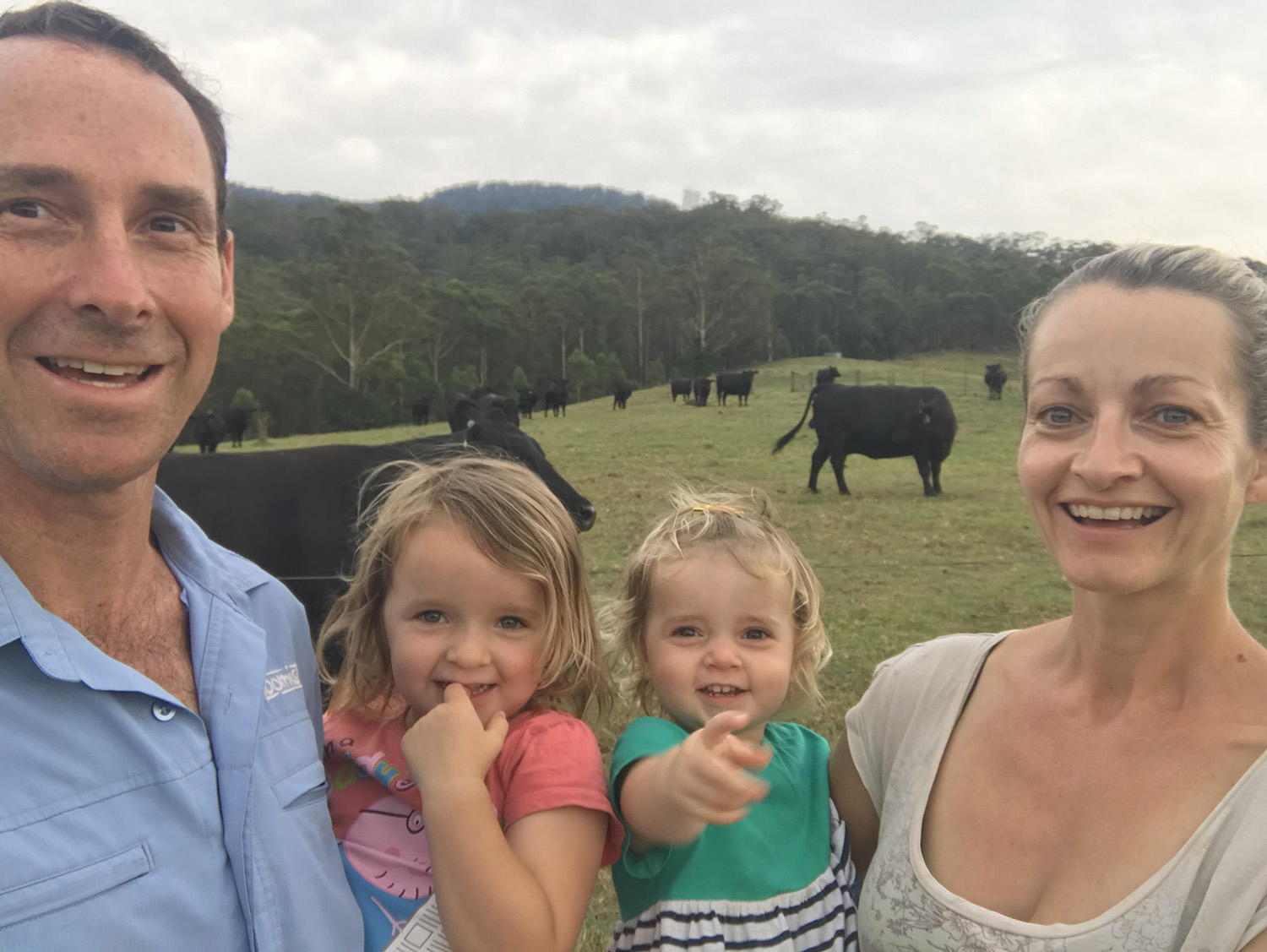
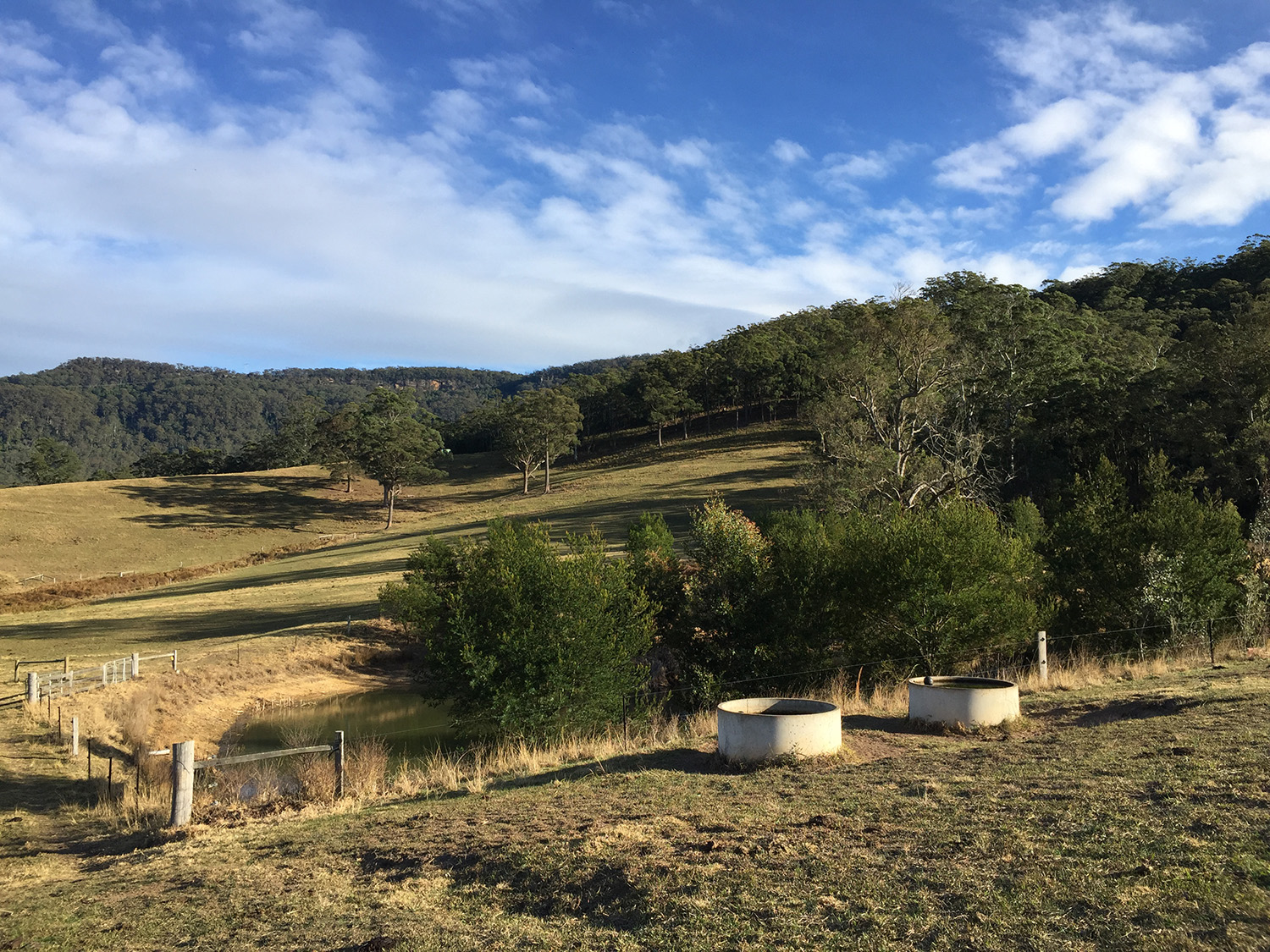

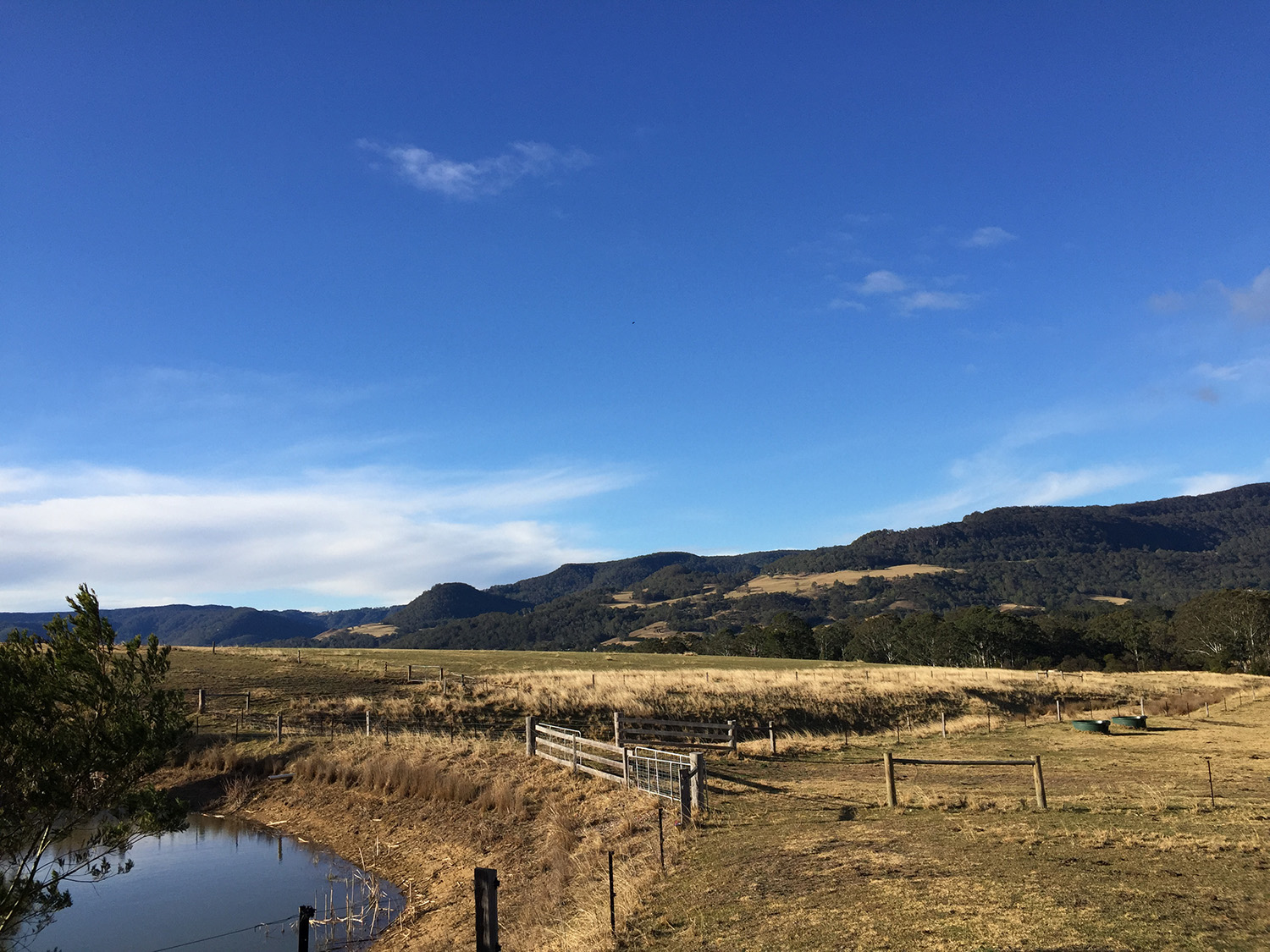
Download a PDF copy of Section 4: Planning for Success.
Fill in the form below and we’ll send you a digital copy.
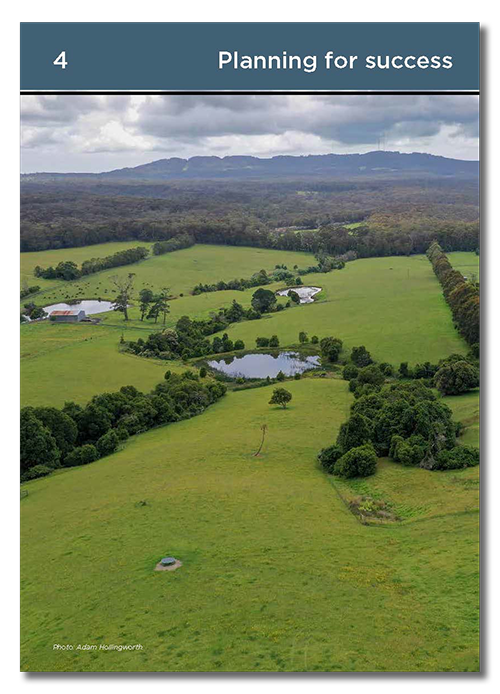
We have incentives available for managing stock around waterways on your farm…
Through our Rivers of Carbon program we can help you manage stock around waterways. We will visit your property and work with you to develop a plan for your waterway that may involve fencing, off-stream water, small-scale erosion works, and re-vegetation.
Once we have an agreement in place on what we want to achieve together, we generally cover at least half of the costs involved in implementing the agreement. Click the button below to learn more about our program:
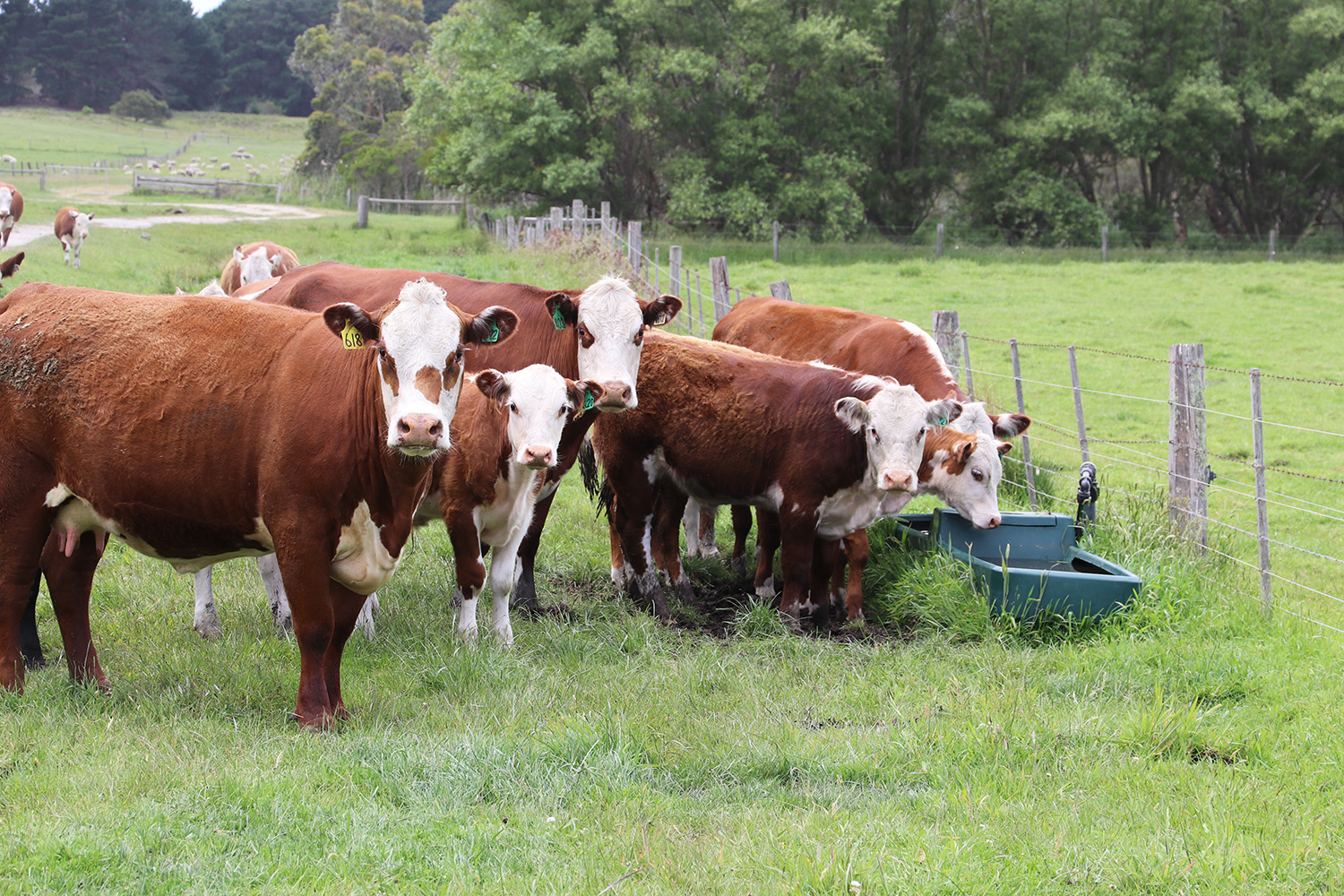
This website is a collaborative project between:
